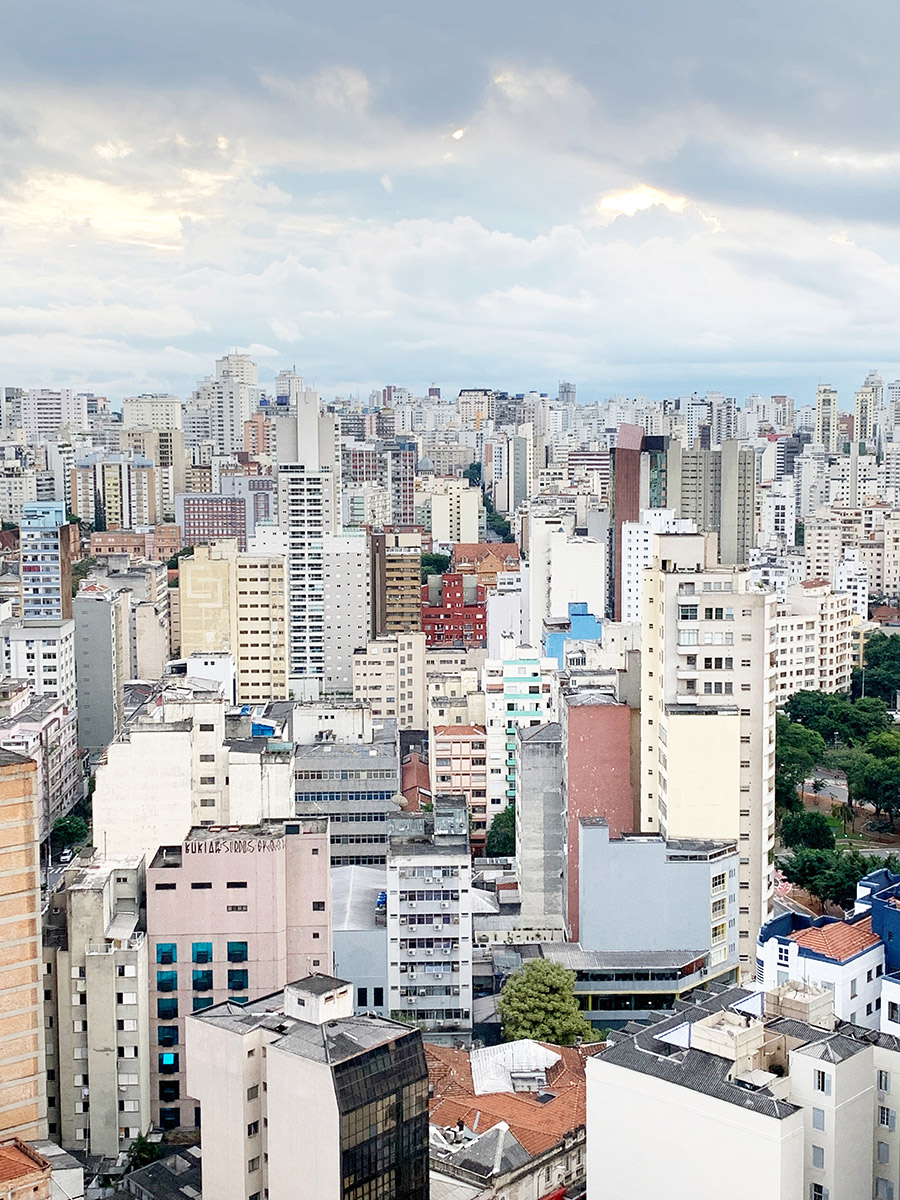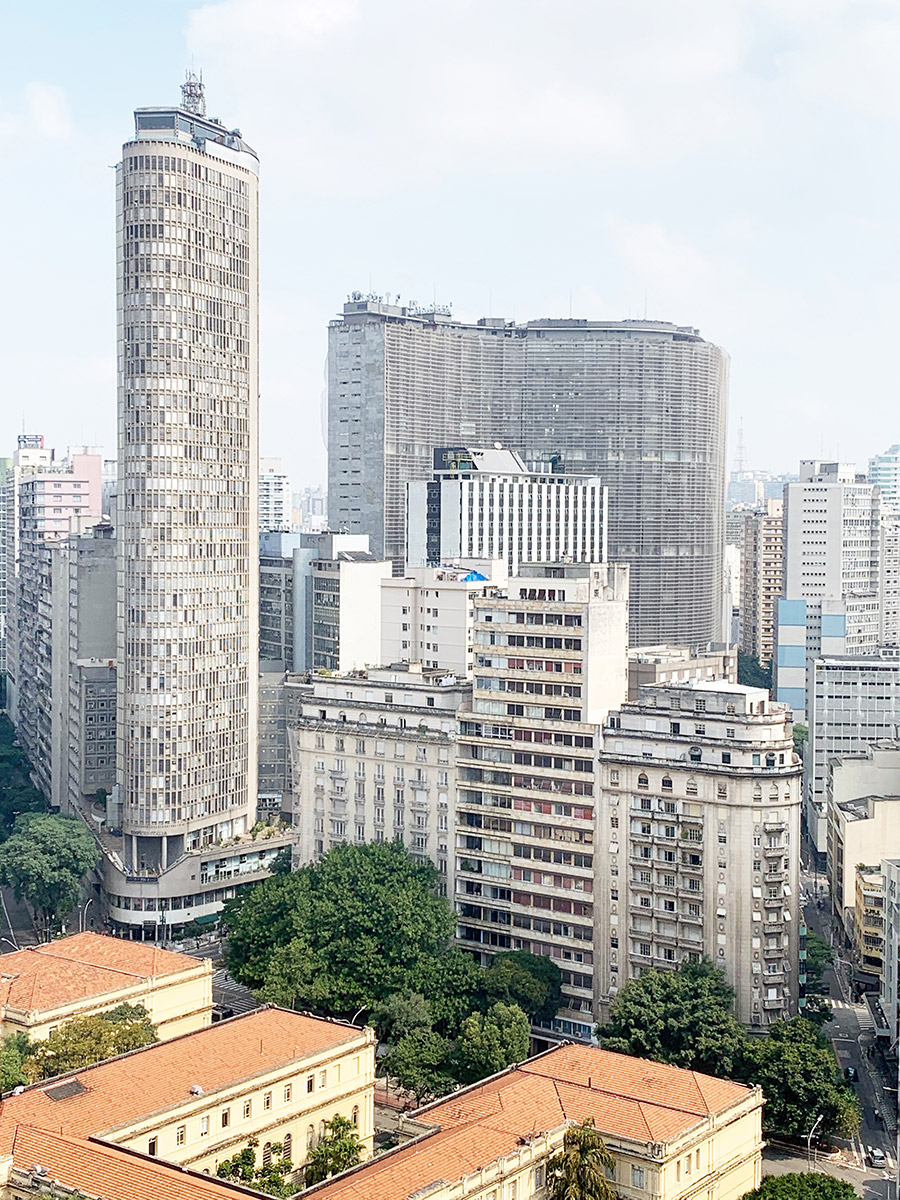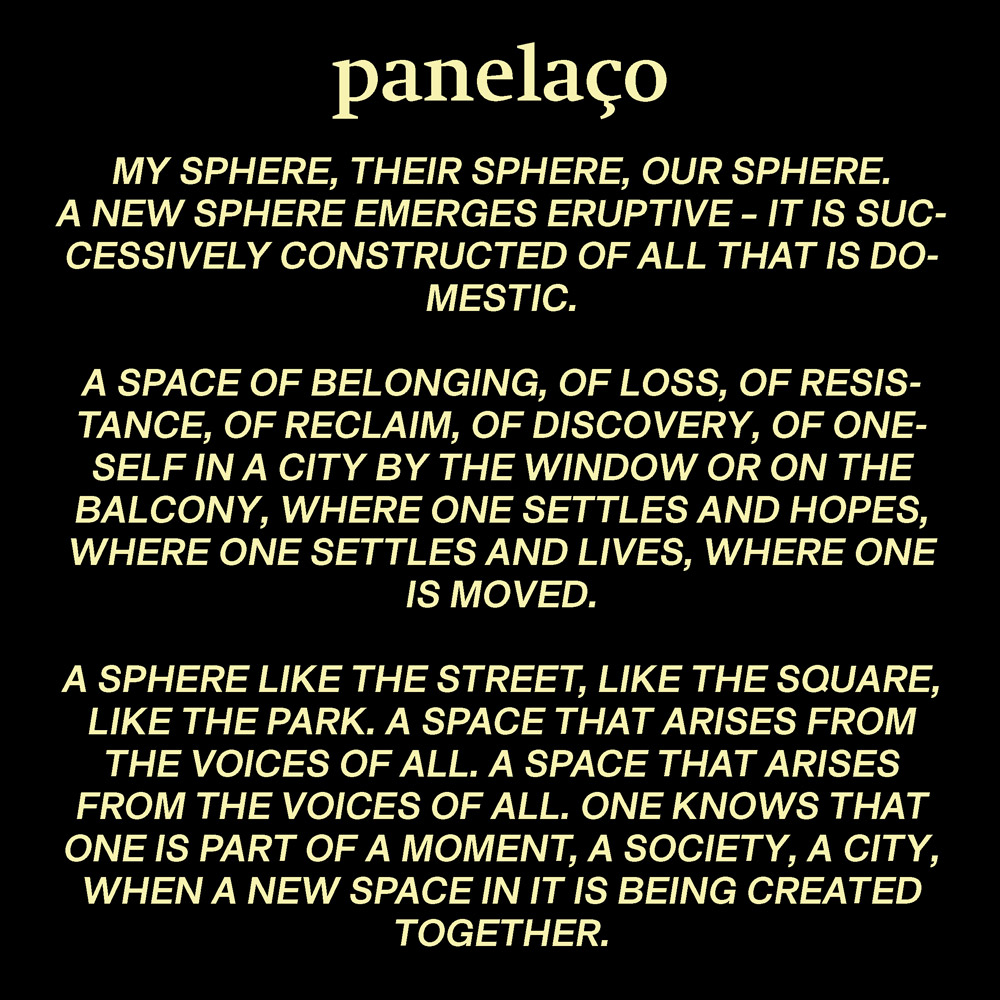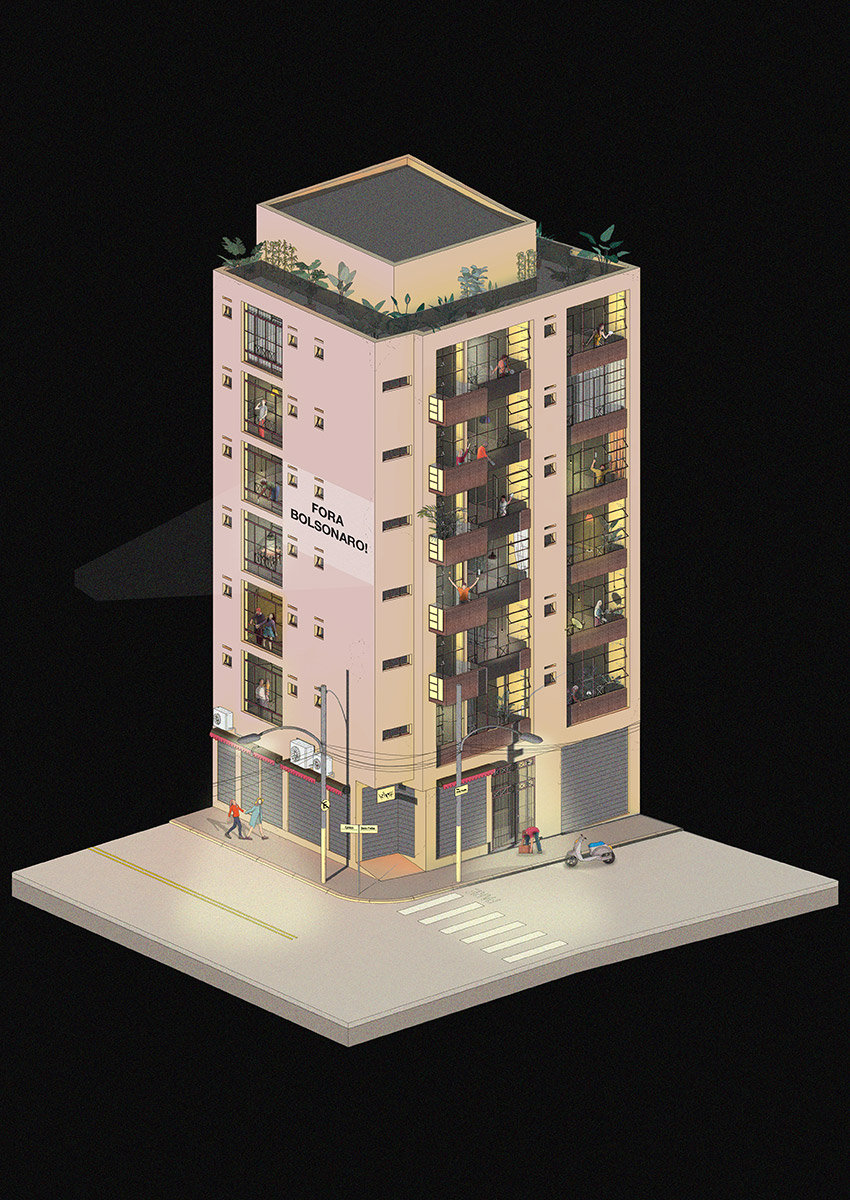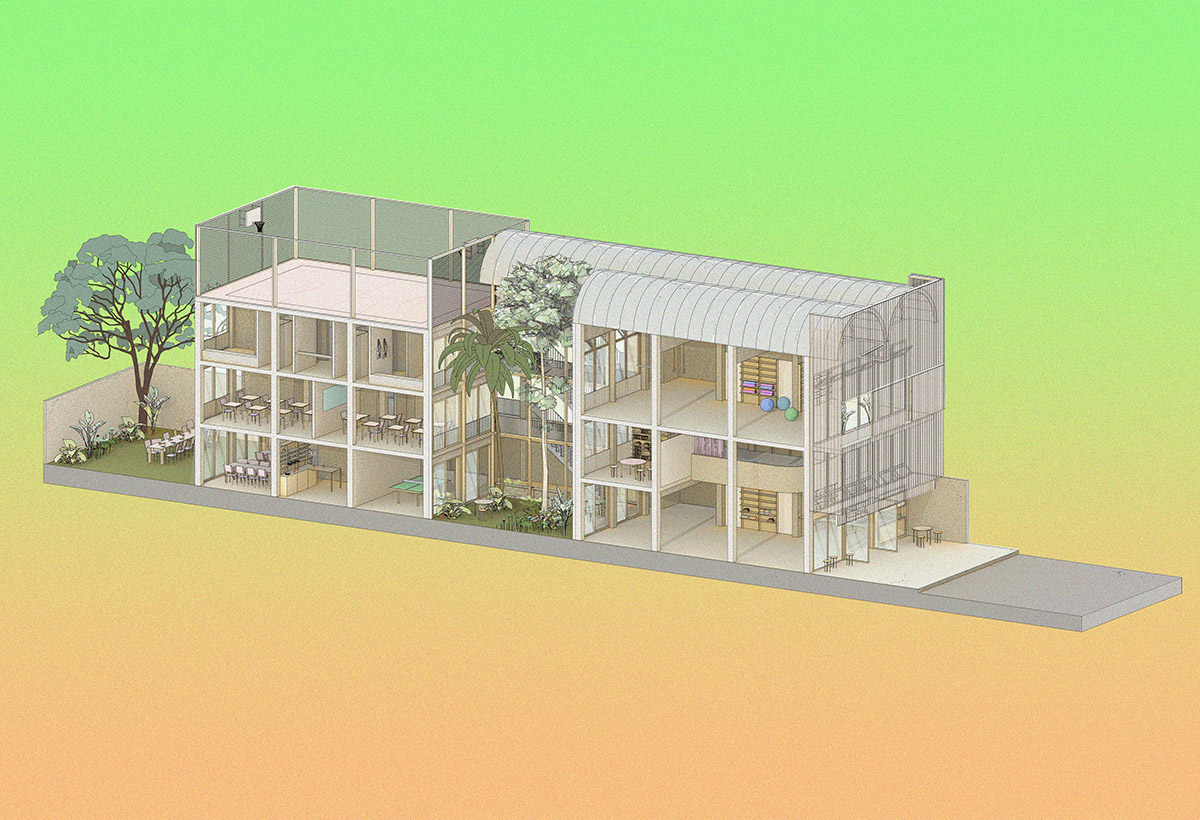20/036
Sabine Kastner
Architect and Urban Planner
Stuttgart / Buenos Aires / São Paulo
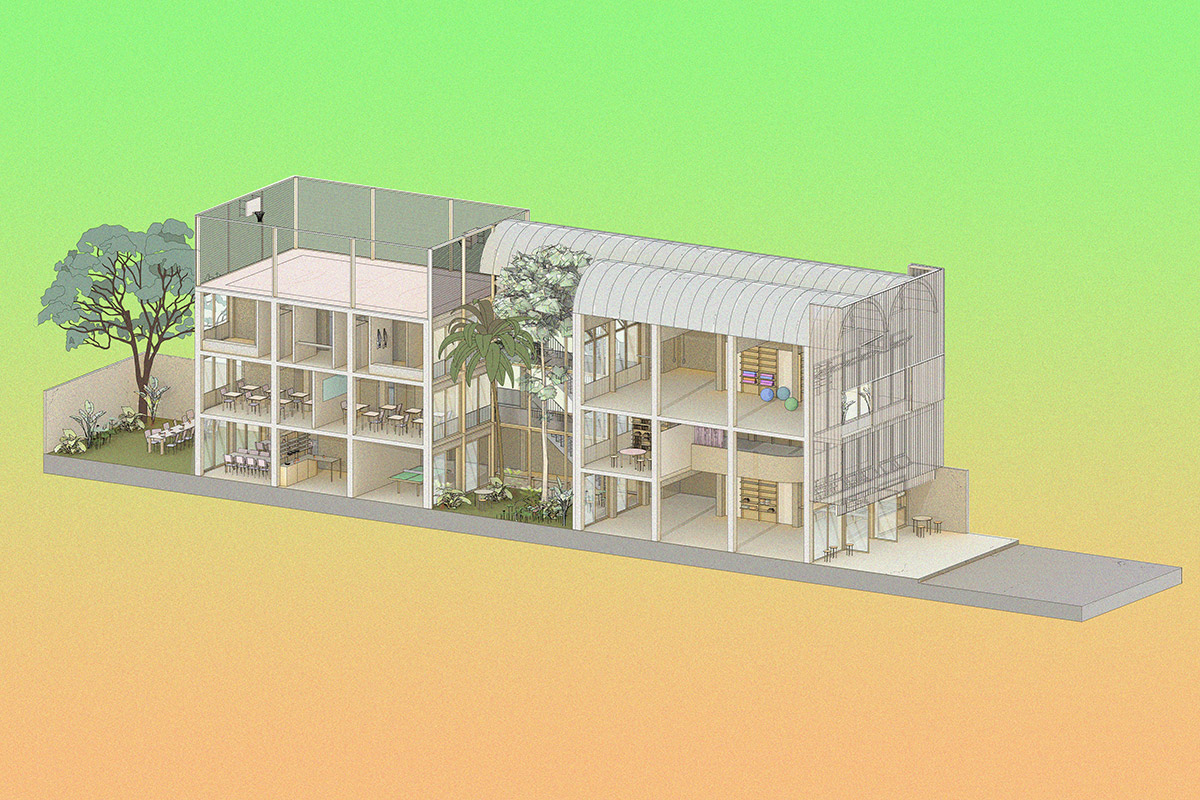
«I want to understand architecture: as the ability to synthesize complexities beyond narrow specialization.»
«I want to understand architecture: as the ability to synthesize complexities beyond narrow specialization.»
«I want to understand architecture: as the ability to synthesize complexities beyond narrow specialization.»
«I want to understand architecture: as the ability to synthesize complexities beyond narrow specialization.»
«I want to understand architecture: as the ability to synthesize complexities beyond narrow specialization.»
Please, introduce yourself and your Studio…
My name is Sabine Kastner, I am a research-focused architect and urban planner, meaning that I try to understand the design practice as research. I grew up in Germany with a Eurocentric view of society, space and urbanism – my perception and recognition was shaped by my understandings of German and European codes. I now work in, and somewhat between, Europe and South America. This constellation allows me to discover diverse environments, which directs my interests into the exploration of complexities and the emergence of specific contexts within these complexities. I always try to approach a maximum of openness in order to unlearn my imprints and prejudices – prejudices in the sense of restriction of thought and limitation of the horizon of interpretation. Sometimes I manage to do this more, sometimes less, but it makes up a large part of how I want to understand architecture: as the ability to synthesize complexities beyond narrow specialization.
How did you find your way into the field of architecture?
I am thinking whether or not I understand this as a closed process. I am thinking of my grandmothers strange furniture, my mothers geometric paintings, my childhood room, the cities I have lived in and the ones I have visited. I think of the moments in my studies when I was upset, about past states, current states, possible future states. I think of journeys, environments and conversations in which I understood that I didn’t understand anything (about architecture) yet. The constant encounter of diverse cities, contexts, cultures and moments change my view of architecture and therefore my understanding of what the architectural field can be for me all the time.
What are your experiences founding your own studio and/or working as self-employed creative?
Moving in and in-between different contexts in Europe and South America has shown me different ways of working. I think I have never been really satisfied with the way young people in Germany enter the "professional" world after their studies. The strong formality, outdated structures, the apparent mistrust in young generations, this absolute narrowness of what is understood as architectural practice. On the other hand, Europe offers enormous resources, both financially and ideally... you just have to find them and know how to use them wisely and you will find more freedom in this rigid system.
In contrast, in countries like Argentina and Brazil, access to such resources is much more limited. However, here I discovered an energy of young designers which inspired me to work independently. Partly this energy finds its origins in situations of crisis or a lack of employable offices. But more importantly, working independently is easier here than in Europe – more informal structures give room for possibilities without big investments. Moreover, many clients in Argentina trust in the work of young architects. They give them an initial platform and in return, more informal work assignments make the process easier for both sides. I am learning a lot from these environments and hope to be able to transfer some of this to the German context.
How would you characterize São Paulo as location for practicing architecture? How is the context this place influencing your work?
Due to a series of circumstances I have spent most of 2020 in São Paulo and it somehow made me proud and grateful to experience this city for some time. São Paulo is so incredibly cruel and so incredibly beautiful at the same time. It is strange, absurd, bizarre, extraordinary and exiting in all its spatial complexities. Besides the city itself, I fell in love with the residential building complexes of the Brazilian Modernity and I wish we would see more of this great Architecture in German architecture schools
Whom would you call your mentor?
I’m very happy to say that I can generally spread the role of a mentor over many people in my personal environment. I admire many for the most diverse things. I enjoy exchanging thoughts and ideas with them and this motivates me constantly. Nevertheless I can not help but specifically think of these three people:
Hanna Noller: Urban designer, urban activist, architect, business economist, carpenter – a doer. All her thousand ideas to (not) shape the world. She is full of experiences that she’s happy to share and she is full of questions that she doesn’t mind to ask. Her opinions, her sincerity, her motivating uncomfortable touch and her constant reminders to do things only when you enjoy them.
Isabel Zintl: Florist, landscape architect, architect, mother and author of »Freiraum Vertikal Denken«. Her way of (not) thinking, her unconventionality, her inspiring and poetic way of seeing the world. Her ability to discover the strangest situations and spatial absurdities. Her pleasure principle.
Charlotte Malterre-Barthes: I don't know her personally, but I think I speak for many women involved in architecture, urbanism and design when I say that she is a role model for many. If you are currently looking for other formats, for inspiration, for something unconventional, for something new, then at some point the paths always lead to her. Her presence, her activism, her involvement – from publications to events, from teaching to exhibitions – is impressive and motivating.
How do you communicate/present Architecture?
For some time now I’ve been visualizing my ideas in a more illustrative way. It started when I came across the manga series »Akira« by Katsuhiro Otomo from the 80s. The black and white illustrations with high contrasts show a rebuilt Tokyo in a post-apocalyptic future in an extremely atmospheric depth. Crime mangas in general play a lot in urban exterior spaces, which is why you get the most diverse angles, perspectives and atmospheres of the city itself, buildings or open spaces. I like to depict this narrative level of city and architecture, to look at the space from different, sometimes distorted angles.
Recently, the whole thing has been transformed from black and white to color and therefore rather from manga to comic. Now I like to browse through comics to get new ideas for representations.
Another style I would like to look into more intensively is the style from the 70s until the 90s – somewhere between pop, modernity, OMA in its early days, something between strange axonometries and unusual perspectives. I find the dimension of political and social criticism behind it especially strong.
What needs to change in the field of architecture according to you? How do you imagine the future? What are your thoughts on architecture and society?
To understand that there is not just one society but many societies, which in turn are made up of many different individuals with different histories. These different societies are located in diverse contexts, which in turn have multiple truths. Different contexts set different design parameters. If design sees that knowledge and truth are bound to context, many things would change.
What is your approach on teaching architecture? What do you want to pass on?
In teaching, I would like to question the construct of the »project«. What is a project anyway? I have the feeling that a large part of teaching is focused on end products or on results that can somehow be classified somewhere.
Personally, this has restricted me a lot in my studies – a sort of »project dilemma«. I would like to give the dynamics of ideas and desires more space in architectural studies, to let these dynamics take over. What would happen to a »project« if you gave free rein to desire in the process? The drifting, the getting lost in hypermedia and libraries, the (re)finding oneself in another place. A given topic would then only be the starting point for a personal thesis and its exploration.
How changed corona the way you work?
It is not easy to talk about a situation that has made life very difficult for many people. But probably crises are one of the most powerful generators for change. One questions many things, has to rethink many things, has to move into uncomfortable and unknown territories. With all its difficulties, the pandemic has given me the final push towards working more independent and I want to be grateful for that. These months also gave me the possibility to initiate the publishing house »Klub« along with Facundo Fernández and Darío Graschinsky, with the aim to explore the contexts of daily architecture.
What person/collective or project do we need to look into?
CLUBE, Architecture Office, São Paulo, Brazil
www.clube.works
@clube.site
Bruna Canepa, Architect and Illustrator, São Paulo, Brazil
www.brunacanepa.com
@brunacanepa
Darío Graschinsky, Architect, Buenos Aires, Argentina
www.estudioge.ch
@dario.graschinsky
Flora Oficina, Architecture Office, Buenos Aires, Argentina
www.floraestudio.net
@floraoficina
If there were one skill you could recommend to a young architect to study in depth at architecture school: what would it be and why?
Representation. I find the discovery of types of representation and the development of a personal relationship to it essential. Types of representation and personal perception of architecture are closely linked. One not only makes spatial statements about representation, but also statements about how one sees architecture, cities, societies. The types of representation, their emphasis and trends of different (architectural) periods allow us to draw conclusions about the societies in which the drawings were created. Perspectives, angles, positionings, colourings, arrangements etc. give insights on the political, social, cultural conditions of a time. From this understanding, representations of incredible depth and strength can emerge and can make the tool of representation the object of research itself.
Project 1
Panelaço
Panelaços (from the Portuguese word for pot „panela“) are domestic forms of protests and demonstrations in Brazil. Panelaços were first popularized in protests against then-President Dilma Rousseff in 2015, when Brazilians would bang pots from the windows and balconies of their apartments during Rousseff's televised speeches. The popularity of Panelaços resurfaced in 2020, amid the global pandemic of COVID-19, to protest President Jair Bolsonaro. Motives for the protests have included Bolsonaro's downplaying of the pandemic crisis and his dismissal of Justice minister Sérgio Moro.
Source: https://en.wikipedia.org/wiki/Cacerolazo#Brazil; Access 15.06.2020, 14:57.
Project 1
Panelaço
Panelaços (from the Portuguese word for pot „panela“) are domestic forms of protests and demonstrations in Brazil. Panelaços were first popularized in protests against then-President Dilma Rousseff in 2015, when Brazilians would bang pots from the windows and balconies of their apartments during Rousseff's televised speeches. The popularity of Panelaços resurfaced in 2020, amid the global pandemic of COVID-19, to protest President Jair Bolsonaro. Motives for the protests have included Bolsonaro's downplaying of the pandemic crisis and his dismissal of Justice minister Sérgio Moro.
Source: https://en.wikipedia.org/wiki/Cacerolazo#Brazil; Access 15.06.2020, 14:57.
Project 2
Club Social y Deportivo
Argentina has a long history of immigration. A large part of Argentina's current population can be traced back to European, mainly southern European, roots. These movements also brought various new cultures to the country, which over time not only spatially represented themselves in the city, but also created special cultural institutions. The »Clubes Sociales y Deportivos" (Social and Sport Clubs) are still numerously distributed throughout the country and its capital. The city of Buenos Aires alone has over 250 of these clubs, which not only tell stories about their specific cultures on various spatial levels, but also provide a deeper understanding of the city itself through their implementation in the urban fabric.
Through a personal research project on Argentinean clubs, the opportunity emerged to design a new club building for the »Club Libertad de Wilde« in the metropolitan area of Buenos Aires in collaboration with two Argentinean architects, Ignacio Nuñez and Facundo Fernández.
Website: www.sabinekastner.com
Instagram: @sabinekastnercom
Credits Text+Images: © Sabine Kastner
Interview: kntxtr, kb, 09/2020
